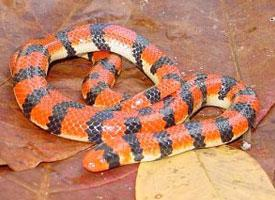
Súlyok és méretek
| Szárnyfesztávolság | 34-tól 45-ig mm |
|---|
Állatleírás
The Grey Dagger, scientifically known as Acronicta psi, is a fascinating species of moth belonging to the Noctuidae family, which is renowned for its vast diversity with approximately 11,000 species globally. This particular species is widely distributed across Europe and extends into parts of Asia, showcasing a remarkable adaptability to various habitats, from woodlands and gardens to hedgerows and grasslands.Adult Grey Dagger moths are characterized by their distinctive wing pattern and coloration, which serve as an excellent example of nature's artistry. The forewings exhibit a complex pattern of grey and black, interspersed with white and sometimes yellow markings. These markings include a prominent black dagger-like symbol, from which the species derives its common name. This symbol, along with other markings, not only adds to their aesthetic appeal but also plays a crucial role in camouflage, helping them to blend into their surroundings and evade predators. The hindwings are usually lighter in color, ranging from grey to white, with subtle patterns that are less conspicuous than those on the forewings.
The wingspan of the Grey Dagger moth typically ranges from 35 to 45 millimeters, making it a medium-sized moth within its family. The body of the moth is robust and covered in fine scales, with colors that harmonize with the wings, further enhancing its camouflage abilities.
One of the most remarkable aspects of the Grey Dagger is its larval stage. The caterpillars are known for their striking appearance, which differs significantly from the adults. They are adorned with a series of bold, colorful markings along their bodies, including black, yellow, and white stripes, and a series of red or orange spots. Additionally, they possess a distinctive "hump" on their back, which, along with their coloration, can make them quite conspicuous. This vivid appearance is a form of warning coloration, signaling to potential predators that the caterpillars may be unpalatable or toxic.
The diet of the Grey Dagger caterpillar is quite varied, feeding on a wide range of deciduous trees and shrubs, including hawthorn, birch, alder, and willow. This dietary flexibility contributes to the moth's widespread distribution and success in colonizing diverse environments.
In terms of reproduction and lifecycle, the Grey Dagger typically has one generation per year in the cooler parts of its range, with adults emerging and mating in the late spring and summer months. After mating, females lay eggs on the underside of host plant leaves, from which caterpillars emerge and begin their feeding and growth phase. As autumn approaches, the caterpillars pupate, spending the winter in a cocoon before emerging as adults the following year to repeat the cycle.
Despite their beauty and ecological role as pollinators and as part of the food web, Grey Dagger moths, like many moth species, face threats from habitat loss, pollution, and the use of pesticides. Conservation efforts are essential to ensure the survival of this species, along with the broader biodiversity of moths and their habitats.
In summary, the Grey Dagger (Acronicta psi) is a remarkable moth species, admired for its striking adult and larval appearances, adaptability to various habitats, and fascinating lifecycle. Its presence enriches the tapestry of biodiversity and underscores the importance of conservation efforts to protect these delicate yet resilient creatures and their ecosystems.
Hasonló állatok
Új állatfotók
Top 10 állat
- Dolphin gull (Leucophaeus scoresbii)
- Diana monkey (Cercopithecus diana)
- Moustached guenon (Cercopithecus cephus)
- Galápagos tortoise (Geochelone nigra complex)
- Stone loach (Barbatula barbatula)
- Japanese macaque (Macaca fuscata)
- Greek tortoise (Testudo graeca)
- Russian tortoise (Testudo horsfieldii)
- Common flying dragon (Draco volans)
- Galápagos penguin (Spheniscus mendiculus)


